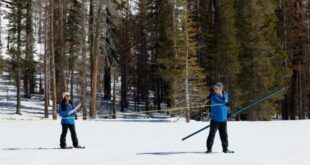Whereas science has not yet afforded us the ability to foretell the future as Tree Study, commissioned by the state Department of Water Resources (DWR) has confirmed a centuries-long history of vacillating frequently between wet and dry conditions.
The study was part of ongoing work by DWR to improve California’s preparedness for dry conditions and better adapt to climate change. The data, examining Southern California tree-rings, was released this week. DWR commissioned the University of Arizona (UA) to collect tree-ring samples using increment borers to extract the tree cores. These tree-ring samples allowed researchers to develop statistical correlations to reconstruct 600 years of streamflow and precipitation data for Southern California watersheds, identifying the number and length of large droughts that occurred before the modern historical period.
“The results of this study further confirm what we’ve long believed and said,” said DWR Director Karla Nemeth. “The norm for California’s climate is to move back and forth frequently between wet and dry conditions, and water conservation must be a way of life for all who enjoy living in or visiting our state.”
The UA data results indicate that short durations of two to three years of dry conditions are common in Southern California. But the data has also revealed that the recent 2012-16 drought was, for most of Southern California, the driest or second-driest five-year drought in the long-term record dating back to the 1400s. Localized impacts increase with the duration of dry conditions therefore duration has become an important metric for local water managers when assessing drought vulnerability.
“Long-term data sets allow evaluation of periodic or cyclical patterns that may be less readily apparent in the shorter historical record,” said Dave Meko, the UA professor who led the study team. “We see patterns of wet/dry variability that occur at various frequencies in both the observed and reconstructed data sets.”
The UA report provides local water managers a centuries-long record of precipitation and streamflow in Southern California’s primary local water resources as well as the Colorado River. This recreated long-term record, which predates the period of recorded data, will help water managers better assess the future risk of dry conditions in their service areas and better manage their water supplies in coming years.
 California Water News Daily Your Source For Water News in California
California Water News Daily Your Source For Water News in California


